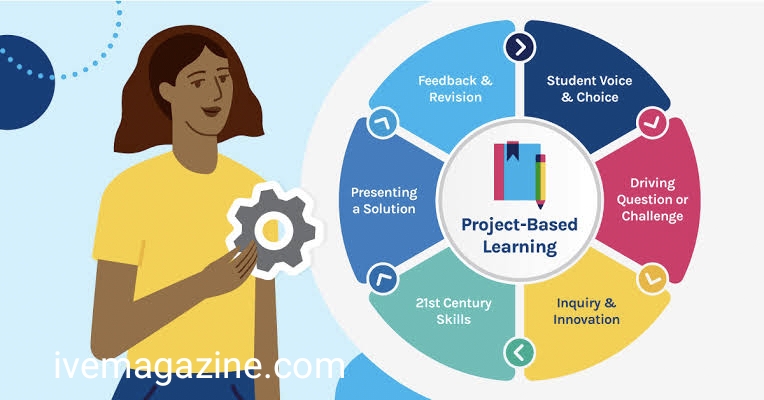Mathematics, often viewed as a subject of theory and numbers, transforms drastically when put into action. The mathematics in action solution represents a practical approach to understanding math concepts by applying them to real-life problems. This innovative educational method promotes deeper learning, enhances reasoning, and nurtures critical thinking skills that go beyond the classroom.
What is Mathematics in Action Solution?
At its core, the mathematics in action solution involves using mathematical principles to analyze, interpret, and solve problems encountered in daily life. Unlike traditional methods, this strategy focuses on contextual learning—students engage in tasks that mimic real-world scenarios, making math more relevant and easier to grasp.
Importance in Modern Learning
In today’s data-driven world, mathematics holds critical value. By teaching students how to apply math effectively, educators equip them with tools that support decision-making, planning, and innovation. This approach ensures learners are not only absorbing concepts but are capable of using them meaningfully.
Real-World Applications of Mathematics
Consider calculating discounts while shopping, analyzing statistics during a sports game, or budgeting for a monthly expense. Each scenario showcases how math is constantly in action. Beyond personal use, industries like finance, engineering, and information technology rely heavily on mathematical applications.
Key Components of Effective Solutions
To master the mathematics in action solution, students must develop problem-solving skills, logical reasoning, and analytical thinking. It’s not just about finding the answer; it’s about understanding why that answer works and how it was reached.
Benefits of Implementing Mathematics in Action
Incorporating real-world problems into lessons helps students relate better to content. It improves their retention, boosts academic performance, and prepares them for future careers. Moreover, it builds confidence as learners realize they can use math to navigate the world around them.
Common Challenges Faced by Learners
However, not all students find this approach straightforward. Some struggle to connect math with real-life contexts, while others face difficulties due to poor foundational understanding. Additionally, lack of engaging resources can limit the effectiveness of this method.
Strategies to Overcome Challenges
Interactive tools like educational games, simulations, and collaborative projects can address these gaps. Teachers should encourage discussion, use visual aids, and incorporate hands-on activities that make learning dynamic and engaging.
Case Studies: Mathematics in Action Around the Globe
Singapore, a global leader in education, integrates this concept through model drawing and heuristics in its curriculum. In the United States, STEM programs blend science and math, promoting problem-solving through technology-driven projects.
Digital Tools Enhancing Math in Action
Modern platforms like GeoGebra, Desmos, and Khan Academy provide interactive environments where students can experiment, visualize, and learn at their own pace. These tools turn abstract concepts into engaging activities.
Teaching Mathematics in Action in Schools
To make this solution effective, schools must embed it into their curriculum. Group projects, real-world challenges, and interdisciplinary tasks can be introduced regularly. Educators need training to shift from lecture-based methods to inquiry-driven instruction.
Assessing Mathematical Understanding Effectively
Traditional tests may not capture the depth of understanding. Instead, rubrics, portfolios, and performance-based assessments offer a holistic view of a student’s ability to apply math in context.
The Role of Collaboration in Math Learning
Working in teams fosters communication and collaborative problem-solving. Peer interactions also encourage reflection and shared learning, reinforcing mathematical concepts.
Using Visualization in Mathematical Solutions
Visual representation of data through charts, graphs, and models enhances comprehension. Geometry and algebra, when visualized, become easier to understand and apply.
Incorporating Gamification in Math Education
Game-based learning motivates students to participate actively. Through challenges, points, and levels, math becomes fun and rewarding—an approach proven to enhance long-term engagement.
The Future of Mathematics in Action Solutions
Emerging technologies like AI and adaptive learning systems are revolutionizing math education. Personalized tools now offer feedback in real time, tailoring the learning journey to individual needs.
Frequently Asked Questions (FAQs)
1. What is the main goal of mathematics in action solutions?
To apply mathematical concepts in real-world situations and foster practical problem-solving skills.
2. Who can benefit from this learning method?
Students, teachers, and professionals seeking to improve analytical thinking and real-life math application.
3. Are there tools that support this method?
Yes, platforms like GeoGebra, Desmos, and Mathigon enhance interactive learning experiences.
4. Is mathematics in action suitable for all grade levels?
Absolutely. With proper adaptation, it suits elementary to college-level learners.
5. How does this approach differ from traditional math teaching?
It focuses on application and problem-solving rather than rote memorization of formulas.
6. Can this method improve test scores?
Yes, students often perform better when they understand and can apply mathematical principles.
Conclusion
The mathematics in action solution is more than a teaching method—it’s a bridge between abstract knowledge and everyday relevance. As education evolves, integrating this solution will empower learners to think critically, solve complex problems, and thrive in an increasingly data-centric world.



